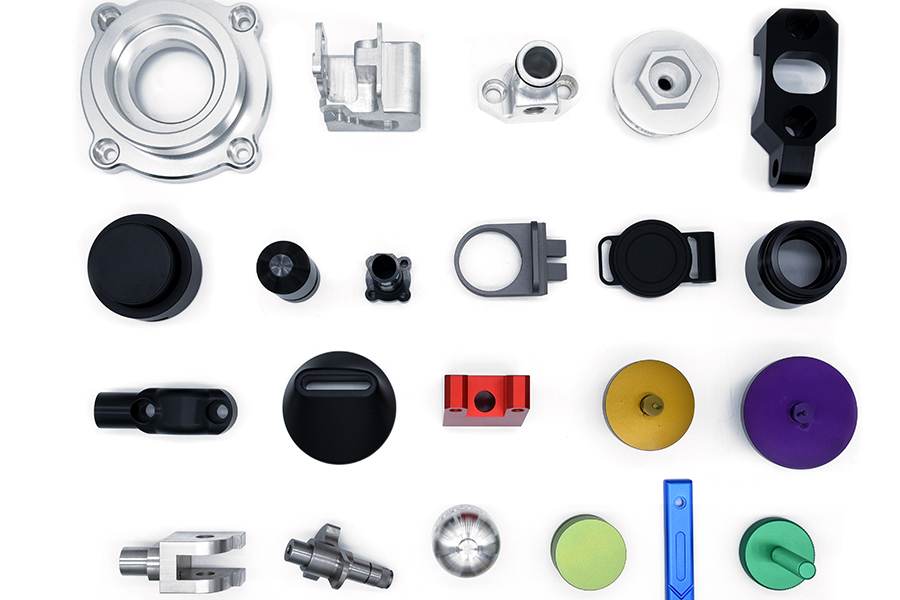Types of aluminum alloys
Aluminum is a versatile material with various types or alloys, each offering unique properties and characteristics. Here are some commonly encountered types of aluminum alloys:
1000 Series: This series includes pure aluminum, often referred to as commercially pure aluminum. It has excellent corrosion resistance, good thermal and electrical conductivity, but relatively low strength. The most common alloy in this series is 1100.
2000 Series: Aluminum-copper alloys make up the 2000 series. They possess good strength, along with excellent fatigue resistance and weldability. Alloy 2024, with high strength and aerospace applications, is a prominent member of this series.
3000 Series: Aluminum-manganese alloys belong to the 3000 series. These alloys exhibit moderate strength and improved corrosion resistance. Alloy 3003 is commonly used in general-purpose applications, such as cookware and roofing.
5000 Series: Aluminum-magnesium alloys make up the 5000 series. They offer good weldability, moderate to high strength, and excellent corrosion resistance, particularly in marine environments. Alloy 5052 is widely used in applications such as sheet metal fabrication and automotive parts.
6000 Series: The 6000 series consists of aluminum-magnesium-silicon alloys, offering good strength, formability, and corrosion resistance. This series is highly versatile and commonly used in various applications, including construction, automotive, and consumer goods. Alloy 6061 and 6063 are popular members of this series.
7000 Series: Aluminum-zinc-magnesium alloys make up the 7000 series, known for their exceptional strength and toughness. These alloys are often used in aerospace and structural applications where high strength is required. Alloy 7075 is a well-known member of this series.
8000 Series: The 8000 series includes aluminum-lithium alloys. These alloys offer high strength, lightweight properties, and excellent fatigue resistance. They are primarily used in aerospace applications, where weight reduction is critical.
It’s important to note that within each series, there are different variations and specific alloys that can offer additional properties or characteristics. The selection of the appropriate aluminum alloy depends on factors such as strength requirements, corrosion resistance, formability, and specific application considerations.
Ways to Customize Aluminum Parts
There are several ways to customize aluminum parts to meet specific requirements and enhance their functionality or aesthetics. Here are some common methods of customizing aluminum parts:
CNC Machining: CNC machining allows for precise customization of aluminum parts. It involves using computer-controlled machines to cut, shape, and drill aluminum to achieve the desired dimensions, features, and tolerances. CNC machining can create complex geometries, chamfers, pockets, threads, and other custom details on aluminum parts.
Surface Finishing: Surface finishing techniques can enhance the appearance, durability, and corrosion resistance of aluminum parts. Some common surface finishing options for aluminum include:
- Anodizing: Anodizing forms a protective oxide layer on the aluminum surface, offering increased corrosion resistance and the ability to add color or dye the part.
- Powder Coating: Powder coating provides a durable and decorative finish by applying a powdered polymer coating to the aluminum part and then curing it.
- Painting: Painting can be used to add color, protection, or specific markings on aluminum parts.
- Polishing: Polishing creates a smooth, reflective surface finish on aluminum parts for aesthetic purposes
Laser Engraving and Marking: Laser engraving or marking can be used to customize aluminum parts by adding permanent labels, serial numbers, logos, or other markings. Laser technology allows for precise and detailed engraving without causing damage to the underlying material.
Assembly and Integration: Aluminum parts can be customized through assembly and integration with other components or subsystems. This may involve fastening, welding, or bonding aluminum parts with other materials or integrating electronics, connectors, or mechanical components.
Bending and Forming: Aluminum parts can be customized by bending or forming them into specific shapes or contours. This can be achieved using specialized bending machines, presses, or by employing techniques such as roll forming or hydroforming.
Welding and Joining: Aluminum parts can be customized by welding or joining them together to create larger structures or assemblies. Welding methods like TIG (Tungsten Inert Gas) or MIG (Metal Inert Gas) welding can be used to fuse aluminum parts together.
Custom Cutting and Trimming: Custom cutting or trimming processes, such as water jet cutting or laser cutting, can be employed to create unique shapes, profiles, or cutouts on aluminum parts.
Surface Texturing: Surface texturing techniques, such as sandblasting or chemical etching, can be utilized to add texture, grip, or a decorative pattern to aluminum parts.
When customizing aluminum parts, it is important to consider the specific requirements, functionality, and aesthetics desired for the end-use application. Working with experienced manufacturers or fabricators who specialize in aluminum customization can help ensure successful results.

